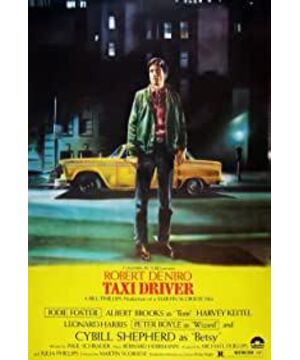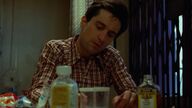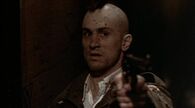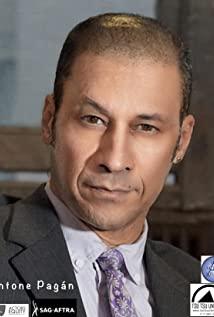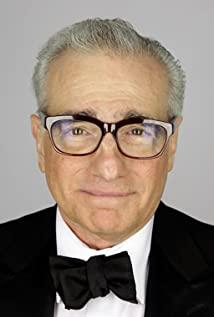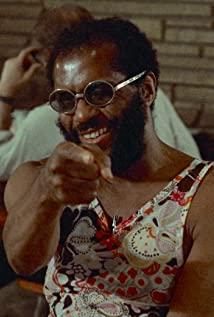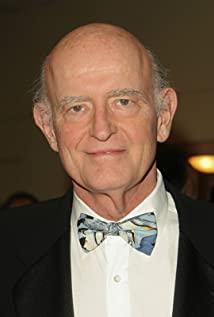United States in the 1970s was a dangerously unstable society in a sense that daily urban lives and the economy were facing decay while ideologies and morality were also greatly challenged. Penetrating through the instability is the loneliness and internal anxiety of each citizen. Martin Scorsese's 1976 movie Taxi Driver illustrates a psychological progression of a Vietnam War veteran taxi driver which eventually causes the final assassination. We cannot understand comprehensively the implications and the apocalyptic meaning of the massacre without going through the process it takes to get to that stage. As a symbolic figure of the era in turmoil, Travis Bickle, the main protagonist, embodies the extensive depression and violent anger in the American society in the 1970s which, as Scorsese and playwright Paul Schrader believe,could be profoundly destructive unless something could be done against them. Travis Bickle is a miniature of the instability of the American society in the 1970s whose violence and loneliness are parallel to many social phenomena.
The American society at the time was waiting for the transition that leads to a calmer, stabler, and a more peaceful era, but the was not easily achievable when the society was on the verge of moving back to the level before the Vietnam War economically and morally. 1970s was when the 1960 rock-and-rollers had grown older and became to face real-life difficulties when the war, which later proved to be nothing but meaningless, hit them right in the face. When the time arrived for them to look for the answer and the meanings of life and figure out what kinds of people they would want to become, the nation was not in a readily position to solve their problems, but instead digressed them from normal, civilian lifestyles, and pushed many of them to the battlefield.Our protagonist Travis is one of those whose lives are not only affected by but also involved directly with Vietnam War and its subsequent social phenomenon.
Travis Bickle, a taxi driver with no prospective high social status whatsoever, is in fact continually pursuing purity, or even beauty, of the world around him. When asked about his dissatisfactions of the society and the city, Travis cannot think of anything else but that the city is so dirty and that he hopes that someone can eventually stand out and clean it all up. Throughout the movie he has made plenty of attempts to calm himself down: chasing after a goddess-like figure Betsy, running for the petition for Presidential election, and so on. Despite a few minor successes (he successfully gets Betsy to go grab coffee with him and even makes it to take her to the movies, by all the odds the Presidential candidate even takes a ride in his cab), reality eventually turns him down,and when his anger and rage accumulates to the extent that he decides to let go control of his feelings, he gets a gun and starts practicing imaginary confronts and scenarios.
Travis remains very skillful with gun-shooting because of his recent militant experience, and from the viewers' perspectives, we can tell that he is clearly enjoying having a pistol back in his hand. The war has influenced him and his fellow Americans more than they have realized. He is not afraid of the war, he misses it. He misses the option of letting everything which bothers him out of his system by shooting a man or two or simply looking into the mirror and imagining himself to be one of those gangster movie protagonists. His desire to be someone who is stronger, tougher, and controls his own life better resembles what many people in the society back then (or also even now) desires to have.
The positive aspect of Travis's character is that deep inside his heart there is kindness and pursuit of purity and simplicity, kind enough to make him notice the filthiness and injustice of the surroundings, but not powerful enough to give him the impulse to do anything practical and constructive about them. What pushes him to commit the acts, however, is the loneliness and anger which are expanding in his body.
In David Thompson's Scorsese on Scorsese, Scorsese mentions the salvational intention of Travis's attempts to make changes and set things straight resembles the conversion and preachings of St. Paul in the Old Testament. “He's like St Paul. He wants to clean up life, clean up the mind, clean up the soul.” (Thompson, Richard, 62) His kindness and sensitiveness enable him to notice Iris, the teenage prostitute, and her unfortunate and pitiful situation and lifestyle. He approaches to her, tries to protect her and Convince her to return to normal life partially because that is what he himself has been missing, but what really pushes him to do anything to break out Iris from the chains is his failure in assassinating the Presidential candidate.
In a sense, Travis's final explosion is not a oddity but a certainty. In the movie Taxi Driver, the psychological instability of Travis progresses and accumulates as the plot continues on. Martin Scorsese and Paul Schrader together spend the most part of the movie setting the perfect mood for the final apocalyptic assassination, the narration of the film, as we can see, is almost entire dedicated to the development of the accumulative unsteadiness of Travis's mind. When time comes when it supersedes Travis's capacity, the assassination comes shockingly yet naturally at the same time, and constitutes a very condensed 5-minute long sequence.
The assassination finally breaks out in the front door, next to where the pimp keeps Iris. Travis (now with a very bold and quite scary-looking hairdo), after a brief aggressive conversation, says “now suck on this”, and shoots the pimp in his stomach. The mise-en-scene in the final apocalyptic sequence of massacre consists of a variety of elements and switching between each element is very significant. In this particular scene on the sidewalk, the camera gives a long shot which makes the gun shot very vague. The physical distance between Travis and the spectators as well as the aviator sunglasses he is wearing make it difficult to scrutinize his facial expression. Despite the distance, we can still hear the conversation very clearly.This short scene is shot outdoors by the sidewalk where there is hardly any street lights and the most lighting we get comes from the lights that shines from the windows of the behind them, giving it a very high contrast blue-tone lighting, preluding the darkness and intensity of the following sequences.
When Travis walks a few more steps forward and enters the front door into Iris's apartment, the camera gives him a medium shot, allowing us to see the darkened hallways and old, dirt-covered walls and moving our sight to the steep staircase (which we have seen in a previous scene when Travis first entered this place) which in a sense indicates the difficulty and hindrance he is about to encounter in order to climb up there and get the businesses settled. The dark, dim lighting indicates the bloodiness of the final assassination and sets the mood for the on-going massacre. The steep stairway and the dark lighting also symbolizes the darkened path, full of barricades, of the road the “heroes” of the society have to go through in order to make a change.
Here, we see Travis switching around his pistols from his pockets. Obviously, it is not absolutely necessary to switch them on and off since they all work fine. Such movement clearly shows that our protagonist, far from having all of his nerves stretched for something extremely violent he is about to do, is enjoying and actually at his peak of exclamation that this moment he has been waiting for is finally happening. He is in indescribable ecstasy in which his thirst of committing violence is in the process of being fulfilled. The dark lighting and the camera which moves rapidly, following his movement the entire time, therefore, not only symbolizes the cruelness of the related sequences, but also symbolizes the running blood in his veins which are entirely spiced up by the mission he is about to complete .
After the spectators get a chance to glance through the scenario, the scene is followed by Travis killing the pimp, having himself injured, filling the private cop's face who shot him in his right arm with bullets, and shooting the old man who guards the door that leads to Iris's room. In this very fast sequence, medium shots are used, giving it a very clear and specific concentration of the movements of characters, and showing the scenario quite thoroughly by shooting in many different angles. In this sequence, the spectators , for the first time in this movie, see blood spilt on the wall and flushing out of men's bodies. Seeing the men being shot and listening to men screaming with pain have very shocking effect. This sequence is finished with an unedited long top shot followed by 36 very quick cuts after Travis is in Iris's room,giving it a very brutal and very violent effect.
Moving into Iris's room, Travis is already in his complete madness and killing the clandestine is not longer necessary in order to get Iris out of the situation. The purpose of killing is now solely for the sake of killing itself. The old man, who is already shot by Travis multiple times, keeps screaming "I'll kill you, I'll kill you" - something Travis has never said before but it certainly reminds him of his long-oppressed desire. After the scene moves to Iris's room, the 180 degree camera position is applied, and we can also notice the three-point lighting which shows the psychological status (in this case, complete madness) of Travis better, as his figure tends to have more depth because of the change in lighting.
There is no music in the background until as the police comes in. The cops break into the room accompanies by a very dramatic soundtrack features heavy drums and very sharp trumpets which signifies the closure of the massacre. It is not until then the spectators get to see a close-up of Travis's face. After he failed to commit suicide because he has run out of bullets, he sits down in the couch and looks and the police calmly, and makes a gesture of his left hand covered by blood and “shoots ” himself, making noise imitating the sound of bullets.
He knows clearly that he deserves being executed for what he has done, yet ironically, as we know from the following scene, Travis is all cleaned up and sleeps in a cozy bed covered by white-cloth sheets, with newspaper and letters hanging on the wall behind him, full of recognition and praises of the his heroic acts of saving a teenage girl from the abyss.
In the very last scene, when Travis drives away in the drizzling way along the dirty streets of the tacky New York neighborhood he always passes, Scorsese uses the soundtrack from the Hitchcock movie Psycho's final scene, when the shot zooms in on the mentally challenged murderer Norman as the unseen psychiatrist, speaking as a voice-over, analyzes the mental status of Norman. The dissonant music, as opposed to the melodious tune used in the previous scene in which the we learn that the public recognizes Travis as a hero, draws the attention of the audience to the similarities between Norman and Travis. The dissonant sound gives the spectators whose nerves are set calm after the brief and rather short scene a strong sense of instability and discomfort; it is almost trying to say that something is about to happen as soon as the rain stops,and the next day when the sun comes out our protagonist and the society as a whole will be in another circulation of oppressing that is not that different from the previous. An assassination as bloody as Travis has just committed is accepted by the public so smoothly, given the situation like that the spectators were left in the theater with shock and concerns and would step out of the theater feeling same about the realities they were stepping back into.given the situation like that the spectators were left in the theater with shock and concerns and would step out of the theater feeling same about the realities they were stepping back into.given the situation like that the spectators were left in the theater with shock and concerns and would step out of the theater feeling same about the realities they were stepping back into.
In Scorsese on Scorsese, Director Scorsese says that, seeing in a New Yorker's view back in 1970s, “buildings are getting old, things are breaking down, the bridges and the subway need repairing. At the same time society is in a state of decay ; the police force are not doing their job in allowing prostitution on the streets, and who knows if they're feeding off it and making money out of it. So that sense of frustration goes in swings of the pendulum, only Travis thinks it's not going to swing back unless he does something about it.” (Thompson, Richard, 60) In an interview of Paul Schrader, the playwright of the film, he relates Travis to himself when he was having financial and mental crisis, he felt like as if he was someone alone in the world, having nothing but a heart that was beating,willing to do anything that would make life a little different. Thus he found the metaphor of the main protagonist being a taxi driver a perfect match for his personal status, which also corresponds to that of many individuals back in the day when the country was not doing a good job in giving young people hope. Travis is “the man who will take anybody any place for money; the man who moves through the city like a rat through the sewer; the man who is constantly surrounded by people, yet has no friends.” (Thompson, Richard, 9) The assassination complex of Travis Bickle is constituted by his loneliness as someone who cannot find his position and point of living in a society which seem to not care whether he does or not.which also corresponds to that of many individuals back in the day when the country was not doing a good job in giving young people hope. Travis is “the man who will take anybody any place for money; the man who moves through the city like a rat through the sewer; the man who is constantly surrounded by people, yet has no friends.” (Thompson, Richard, 9) The assassination complex of Travis Bickle is constituted by his loneliness as someone who cannot find his position and point of living in a society which seem to not care whether he does or not.which also corresponds to that of many individuals back in the day when the country was not doing a good job in giving young people hope. Travis is “the man who will take anybody any place for money; the man who moves through the city like a rat through the sewer; the man who is constantly surrounded by people, yet has no friends.” (Thompson, Richard, 9) The assassination complex of Travis Bickle is constituted by his loneliness as someone who cannot find his position and point of living in a society which seem to not care whether he does or not.the man who is constantly surrounded by people, yet has no friends.” (Thompson, Richard, 9) The assassination complex of Travis Bickle is constituted by his loneliness as someone who cannot find his position and point of living in a society which seem to not care whether he does or not.the man who is constantly surrounded by people, yet has no friends.” (Thompson, Richard, 9) The assassination complex of Travis Bickle is constituted by his loneliness as someone who cannot find his position and point of living in a society which seem to not care whether he does or not.
Schrader and Scorsese are both trying to make a point that problems that individuals in the society are struggling with are either directly or indirectly caused by the society and vice versa. Further, the problems may be ignored and severe consequences may be avoided for a while, but as long as they remain unsolved, they accumulate, and one day they will break out and cause destructions. Travis's assassination complex results from the long-term unsolved loneliness, lack of recognition, and being granted with violence and later being deprived of it. The pressure of his self-restriction from communication with outside world and violence which he could use as an outlet of his confusions magnifies as time (the plot) goes by as the social problems and instability accumulate.The assassination complex Travis has an individual parallels to and reflects the illness of the society which is filled with decay in mental, institutional, and infrastructural aspects the post-Vietnam-War and post-Water-Gate society faced.
The acceptance by the public of Travis's behavior reflects the director's concern that the society itself is so ill to the extent that it has lost its judgment and its ability to self-adjust. The inchoate rage in Travis which might break out again any time like a time bomb and the illness of his psychology are not as horrendous as the idea that the society might not be able to recognize the problem even when it is pushed right in front of it. Through the entire film the spectators have been watching what Travis has been doing, we know everything he does and every reason for his behaviors, but in the scene in which the voice-over reads the letter from Iris's father,we are pushed in a more objective perspective because the director expects us to see it more clearly and consider more seriously about the how smoothly and naturally the public accepts such a behavior.
As the spectator's knowledge of Travis's psychological status develops as they watch the film, they begin to see the parallel between the illness of Travis and that of American society in the 1970s. The loneliness and oppression the protagonist has to deal with corresponds to the pressure people experience in real-life society. People know that one day, as some point, those social problems which have not been dealt with are going to break out when it is out of the society's toleration capacity, just as when the assassination impulse of Travis can no longer stay peacefully in his mind. When impulses are restricted for too long one day they will explode, just as a time bomb will eventually explode unless an expert cuts off the wire and solves the problem from the roots.The problems need to be solved - Scorsese and Schrader use the metaphor of a taxi driver to tell us that.
Citation:
Taxi Driver. Dir. Martin Scorsese. Perf. Robert De Niro, Jodie Foster, and Cybill Shepherd. Bill/Phillips, Italo/Judeo Productions, 1976. Film.
Thompson, Richard. "Screenwriter: Taxi Driver's Paul Schrader." Film Comment Apr. 1976: 6-19. Print.
Scorsese, Martin, Ian Christie, and David Thompson. Scorsese on Scorsese. London: Faber, 2003. Print.
View more about Taxi Driver reviews


